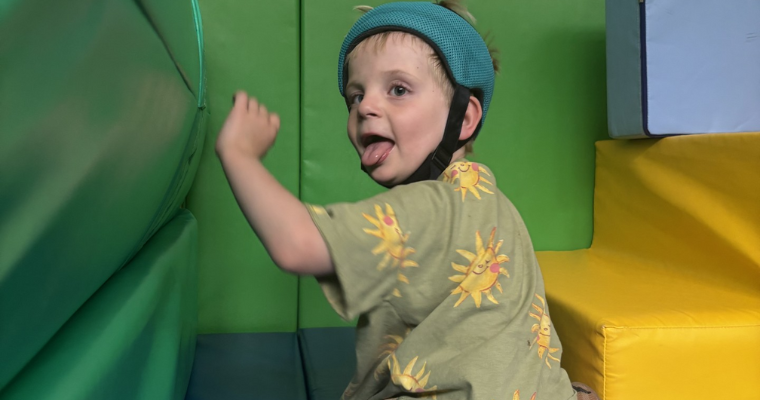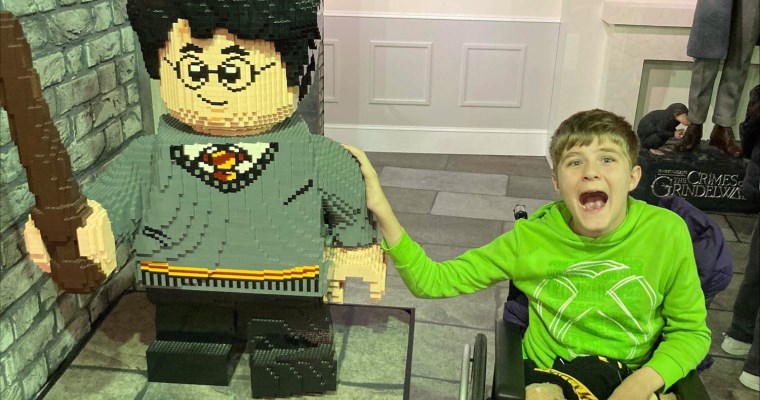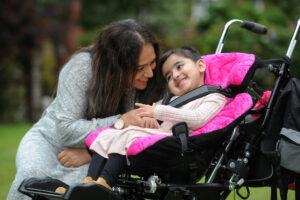
Category: Ataxia UK
Posted on 06.11.2025
Myles is a seven-year-old who loves to crawl around a soft play with a smile on his face, despite the extra effort that it can take him, due to his ataxia symptoms.
In Myles’s case, his cerebellar ataxia is a clinical feature of his primary condition, 4H Leukodystrophy, diagnosed when he was three, which itself is a progressive, incurable neurological disease. Mum, Georgia, first had concerns when Myles was around six months old – sitting up was a struggle for him and he would sit in a ‘w’ position, with his knees bent behind each side of him.
Myles has never walked – his only independent mobility is crawling. He can only stand if he is supported by a frame, and he wears a medical helmet to protect his skull from frequent tumbles.
For Georgia, caring for Myles whilst seeing him lose body function is emotionally exhausting.
“The ataxia has been one of the hardest symptoms of Myles’s condition to deal with. It has taken over his life, preventing him from being independent and limiting his day-to-day ability to do the things he would like to do.” Georgia
Progressive symptoms
The progression of Myles ataxia is already evident from his reduced ability to stand in him frame, which once he was able to maintain for an hour, but now can be less than 15 minutes. Doctors have advised Georgia that he may also begin to lose head control and with that, have issues with swallowing food.
To navigate a child’s ataxia symptoms is a frightening prospect for any parent, and Georgia has already attended several of Ataxia UK’s online community support meetings. She has recently been introduced to another parent of a child with ataxia and will be taking part in a new support group specifically for parents.
Whilst around 10,000 adults in the UK have ataxia, there are thought to be only around 500 children with the condition. Ataxia UK fund research into finding treatments and cures, and offer advice, information and support to people affected by the condition.



